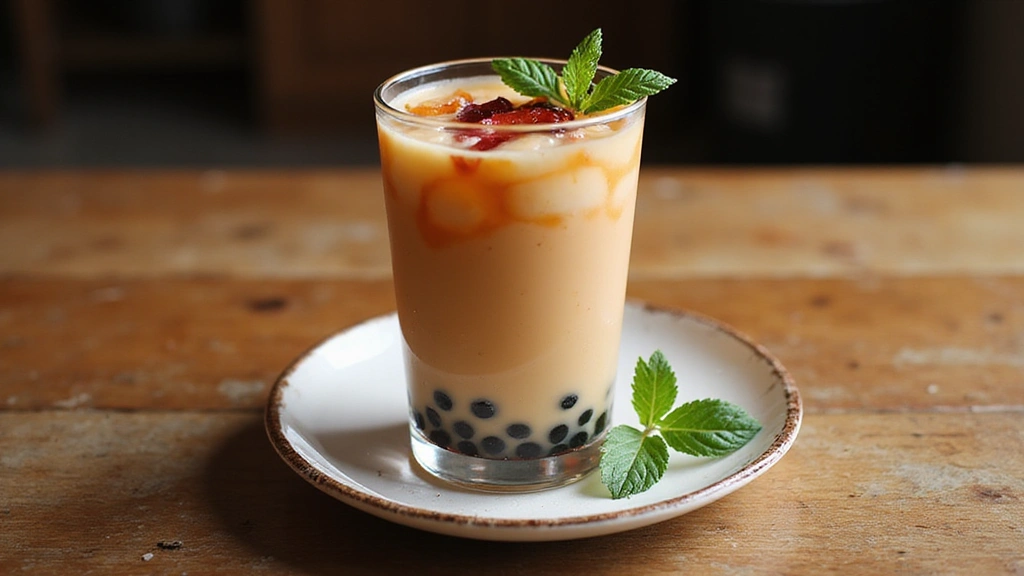The refreshing taste of Taiwanese Bubble Tea with Fresh Fruits is a delightful journey into the heart of Asian culinary innovation.
Each sip is a harmonious blend of creamy milk tea, chewy tapioca pearls, and the vibrant burst of fresh fruits.
I first encountered this delightful drink during a bustling night market adventure in Taipei, where the aroma of freshly brewed tea mingled with the sweet scent of ripe fruits.
This recipe captures the essence of that experience, combining authentic techniques with a modern twist to bring you a beverage that is both exotic and familiar.
Perfect for a warm summer day or as a unique treat at a gathering, this bubble tea recipe is sure to impress and refresh.
Prepare to embark on a flavorful adventure that will transport you to the lively streets of Taiwan.
The History and Cultural Significance
• Taiwanese Bubble Tea traces its origins to the 1980s in Taichung, where it was originally created by mixing tapioca pearls with milk tea.
• The dish evolved over decades as cafes experimented with different flavors and textures, eventually becoming the beloved version we know today.
• In Taiwanese culture, this dish traditionally appears at social gatherings, symbolizing friendship and joy.
• While many variations exist across different regions, the authentic version maintains the key characteristic of chewy tapioca pearls that sets it apart from imitations.
Recipe Overview
Nutritional Information
Essential Equipment Guide
Shaker: A shaker is essential for mixing the tea and milk thoroughly, ensuring a smooth and creamy texture. If a cocktail shaker is unavailable, a mason jar with a sealed lid can work as an alternative. Look for a shaker with a tight seal to prevent spills.
Straw: Wide straws are crucial for enjoying the chewy tapioca pearls without clogging. Metal, glass, or reusable plastic straws are environmentally friendly options. Ensure the straw’s diameter is at least 12mm for optimal use.
Saucepan: A medium-sized saucepan is necessary for cooking tapioca pearls to the perfect consistency. Nonstick options are preferable to prevent sticking, and a clear lid can help monitor the cooking process.
Ingredients
For the Base
|
|
| Amount | Ingredient | Notes |
|---|---|---|
| 4 cups | black tea | strongly brewed for rich flavor |
| 2 cups | whole milk | adds creaminess |
| 1/2 cup | tapioca pearls | cooked according to package instructions |
For the Sweetener
| Amount | Ingredient | Notes |
|---|---|---|
| 1/4 cup | sugar | dissolved in hot tea |
For the Fresh Fruits
| Amount | Ingredient | Notes |
|---|---|---|
| 1 cup | fresh mango | diced, adds tropical sweetness |
| 1 cup | fresh strawberries | sliced, for tart contrast |
For the Garnish
| Amount | Ingredient | Notes |
|---|---|---|
| 4 sprigs | mint | fresh, for aromatic garnish |
Preparation Methods
Brewing Strong Tea: Brewing a strong tea is critical for maintaining the tea's flavor amidst the milk and fruits. Use double the usual amount of tea leaves, steeping in hot water for 5 minutes. Avoid over-steeping to prevent bitterness.
Cooking Tapioca Pearls: Tapioca pearls require careful cooking to achieve their signature chewiness. Boil water before adding pearls, and stir frequently to prevent clumping. Taste as they cook to ensure the desired texture.
Fruit Infusion: To infuse the tea with fresh fruit flavors, gently mash fruits to release juices before adding to the tea. This enhances the fruitiness without overpowering the tea's essence.
Step 1: Prepare the Tea
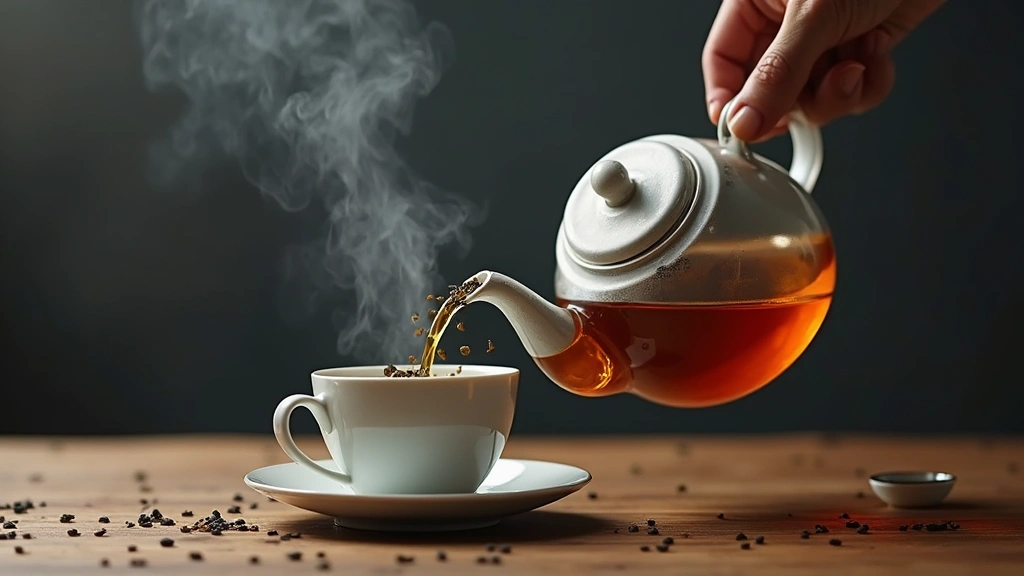
Brew the black tea using twice the usual amount of leaves.
Steep for 5 minutes to ensure a strong flavor.
Strain the tea leaves and dissolve sugar while the tea is hot.
Let the tea cool to room temperature.
Step 2: Cook the Tapioca Pearls
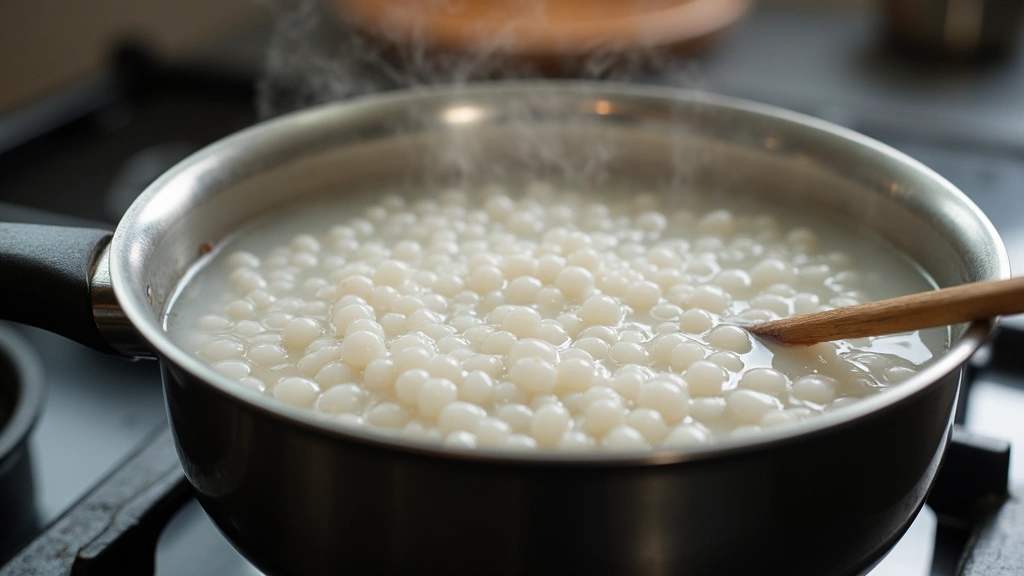
Bring a medium saucepan of water to a rolling boil.
Add the tapioca pearls and stir to prevent clumping.
Cook for 10 minutes or until pearls are chewy.
Drain and rinse under cold water to stop the cooking process.
Step 3: Prepare the Fresh Fruits

Dice the mango and slice the strawberries into small pieces.
Lightly mash the fruits to release their juices.
Set aside the fruits in separate bowls.
Reserve a few slices for garnish.
Step 4: Combine Tea and Milk
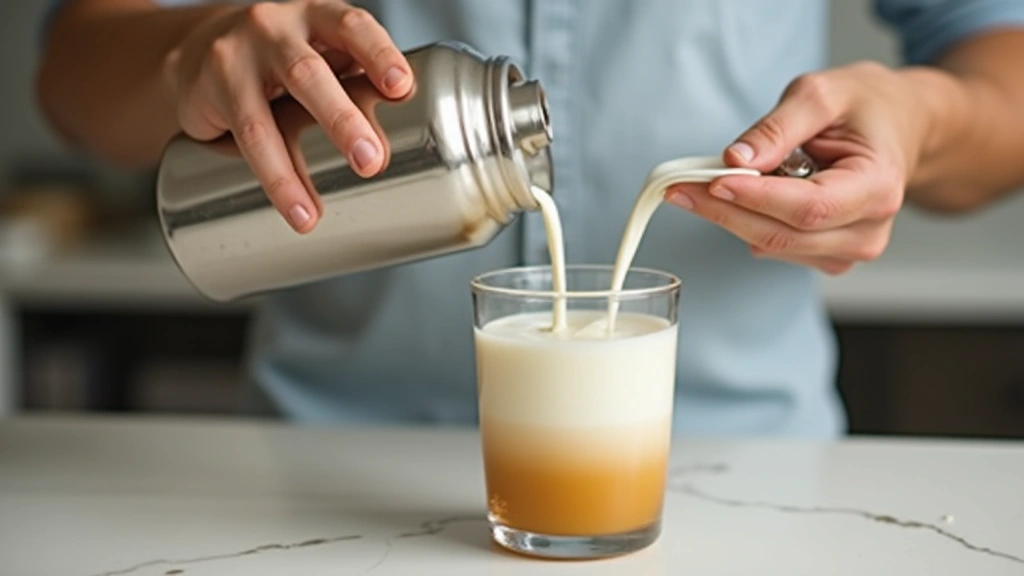
In a shaker, combine the cooled tea and whole milk.
Shake vigorously to mix thoroughly.
Ensure the mixture is smooth and creamy.
Taste and adjust sweetness if necessary.
Step 5: Assemble the Bubble Tea

Divide the cooked tapioca pearls among the serving glasses.
Add the fruit mash evenly into each glass.
Pour the tea mixture over the fruits and pearls.
Stir gently to combine.
Step 6: Add Ice and Garnish
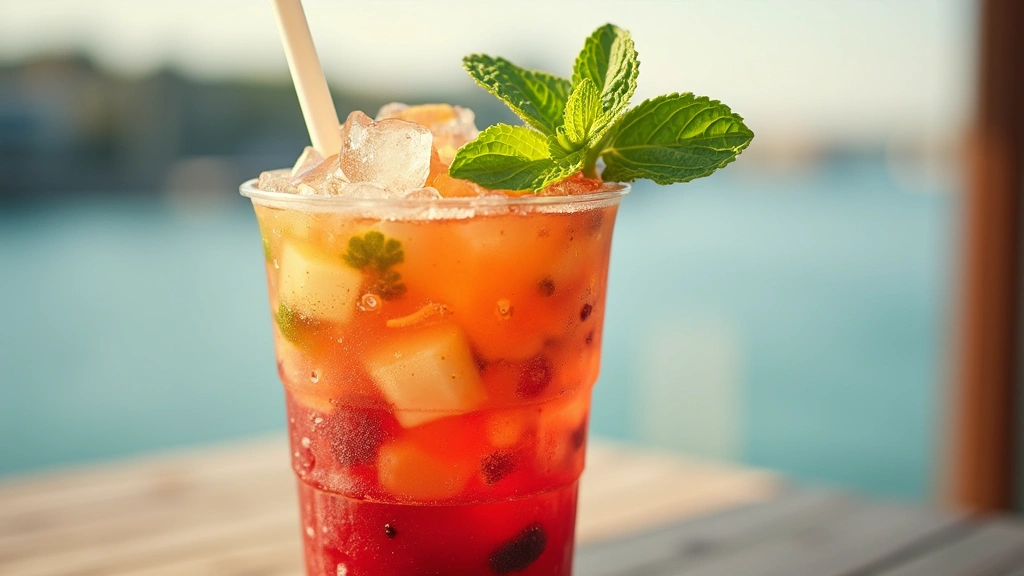
Fill each glass with ice cubes to chill the drink.
Garnish with reserved fruit slices on top.
Add a sprig of fresh mint for aroma.
Serve immediately with wide straws.
Step 7: Serve the Bubble Tea
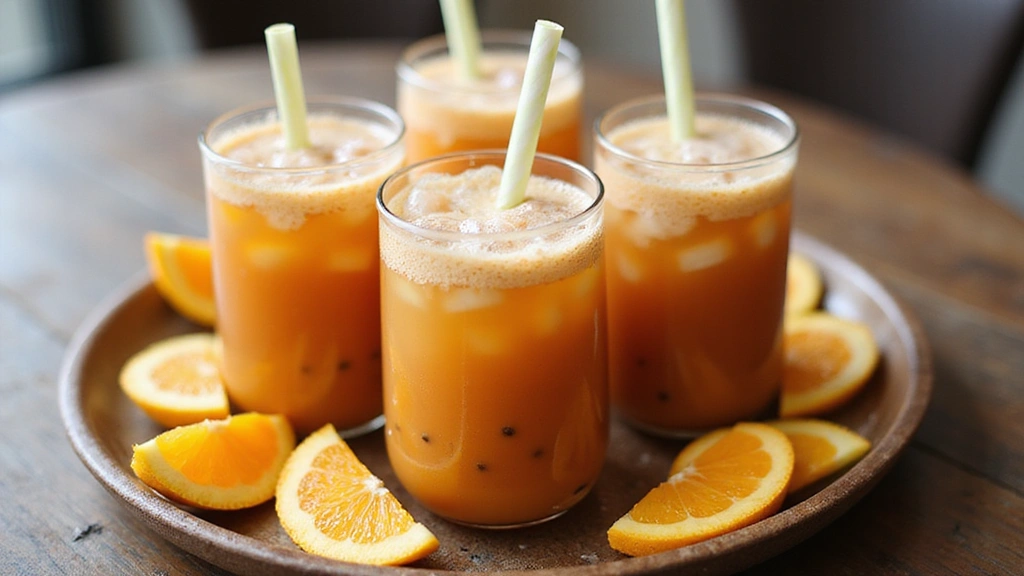
Place the bubble tea glasses on a serving tray.
Ensure each glass has a wide straw for easy drinking.
Present the drinks with a side of fresh fruit slices.
Enjoy the refreshing and aromatic Taiwanese Bubble Tea.
Step 8: Clean Up
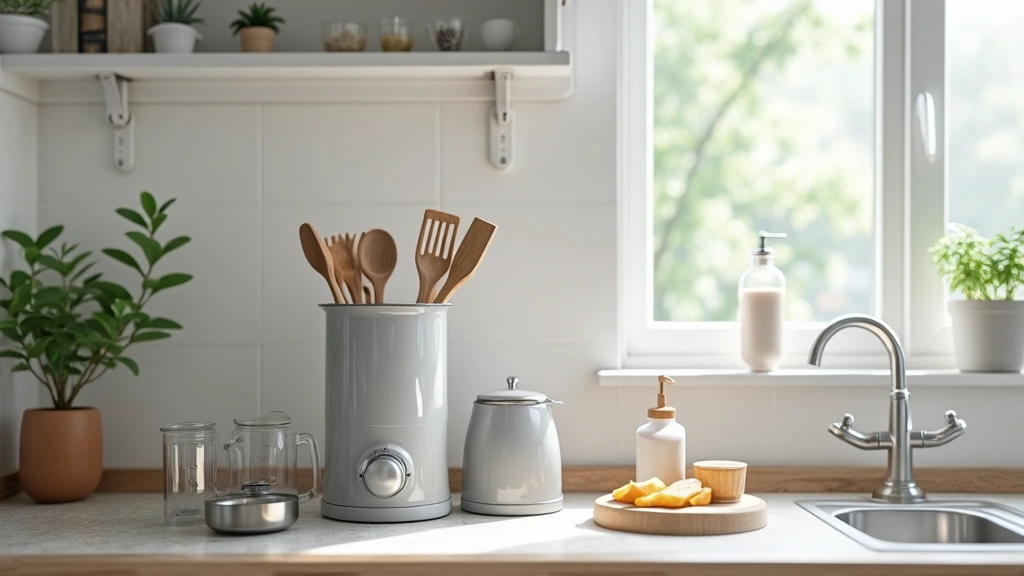
Rinse all used equipment in warm, soapy water.
Dry thoroughly to prevent any residue buildup.
Store leftover ingredients in airtight containers.
Wipe down the preparation area to maintain cleanliness.
Critical Timing and Temperature Guide
Brewing Tea: Steep tea for exactly 5 minutes at 212°F (100°C). Look for a deep amber color. Avoid over-steeping to prevent bitterness.
Cooking Tapioca Pearls: Boil for 10 minutes at a rolling boil. Pearls should be translucent and chewy. Avoid undercooking, which results in hard centers.
Chilling Tea: Allow brewed tea to cool to room temperature before mixing with milk. Rapid cooling preserves flavor. Avoid adding milk to hot tea to prevent curdling.
Pro Tips for Taiwanese Bubble Tea
• Ingredient Selection: Choose high-quality loose-leaf black tea and ripe, juicy fruits to elevate the drink's flavor profile.
• Preparation Secret: Pre-soak tapioca pearls for 30 minutes to reduce cooking time and improve texture.
• Temperature Management: Use cold milk for a creamier and more refreshing drink.
• Texture Enhancement: Slightly overcook tapioca pearls for a softer, more pleasant chew.
• Flavor Layering: Add a pinch of salt to the tea to enhance its natural sweetness and complexity.
• Make-Ahead Strategies: Brew tea and cook pearls a day ahead, storing separately in the fridge to save time on the day of preparation.
• Restaurant-Quality Finishing Touches: Serve with a dollop of whipped cream on top for a luxurious touch.
• Equipment Optimization: For best results, use a blender to mix fruits into a puree for a smoother texture.
Troubleshooting Common Issues
• Tea Too Bitter: Over-steeped tea can be bitter. Remedy by diluting with more milk or brewing a fresh batch for a milder taste.
• Tapioca Pearls Too Hard: Insufficient cooking time can cause hard pearls. Extend boiling time by 2-3 minutes until soft.
• Flavors Not Blended: If flavors are not well-integrated, shake the mixture more vigorously or use a blender for better homogenization.
• Drink Too Sweet: Adjust sweetness by adding more milk or diluting with unsweetened tea.
• Fruits Sinking: For fruit pieces that sink, puree fruits thoroughly or use a thicker base to suspend them evenly.
• Curdling Milk: To prevent milk curdling, ensure tea is cooled before adding milk.
Variations and Regional Differences
• Hong Kong Style: This version includes evaporated milk instead of whole milk, adding a richer and creamier texture unique to Hong Kong's culinary style.
• Matcha Variation: Replace black tea with matcha powder for a vibrant green color and a distinct, earthy flavor popular in Japan.
• Thai Twist: Incorporate Thai tea leaves and add a splash of condensed milk for a sweet and aromatic Thai-inspired bubble tea.
• Southeast Asian Tropical: Use coconut milk and tropical fruits like pineapple and lychee for a Southeast Asian twist with a refreshing tropical flair.
Food Science Behind the Recipe
• Emulsification: The shaking process creates a stable emulsion between the tea and milk, leading to a creamy texture. Understanding emulsification helps achieve a consistent blend.
• Gelatinization: Cooking tapioca pearls involves gelatinization, where starch molecules absorb water and swell, creating the chewy texture. Mastering this process ensures perfectly cooked pearls.
• Flavor Release: Mashing fruits releases volatile compounds and sugars, enhancing the drink's aroma and sweetness. Recognizing these flavor release mechanisms can improve flavor infusion techniques.
Frequently Asked Questions
What's the most common mistake people make when preparing Taiwanese Bubble Tea? Overcooking the tapioca pearls is a frequent error, leading to a mushy texture. Proper timing is key.
Can I use any type of milk for this recipe? Yes, you can substitute with almond, soy, or oat milk to suit dietary preferences while maintaining the creamy texture.
How can I store leftover bubble tea? Store the tea separate from pearls in the fridge for up to 24 hours. Combine before serving to maintain freshness.
Is it possible to prepare this recipe without sugar? Absolutely, you can use natural sweeteners like honey or stevia as alternatives that blend well with the tea.
Are there any low-calorie variations? Yes, use skim milk and reduce or eliminate sugar for a lower-calorie version without compromising too much on taste.
Why is my bubble tea separating? Separation occurs if not mixed well. Shake thoroughly before serving to achieve a consistent blend.
How can I make the drink more fruit-forward? Increase the amount of fruit puree or slices to enhance the fruity flavor profile without overpowering the tea.
Serving and Presentation Guide
• Traditional Presentation: Serve in transparent glasses to showcase the layers of tea, pearls, and fruits with a wide straw for sipping.
• Modern Twist: Use mason jars for a rustic, Instagram-worthy presentation that appeals to a younger audience.
• Garnished Elegance: Add a slice of fruit on the rim and mint sprig for a classy touch, perfect for dinner parties.
• Casual Style: Serve in takeaway cups with lids for an authentic street-food experience, ideal for gatherings or picnics.
Conclusion
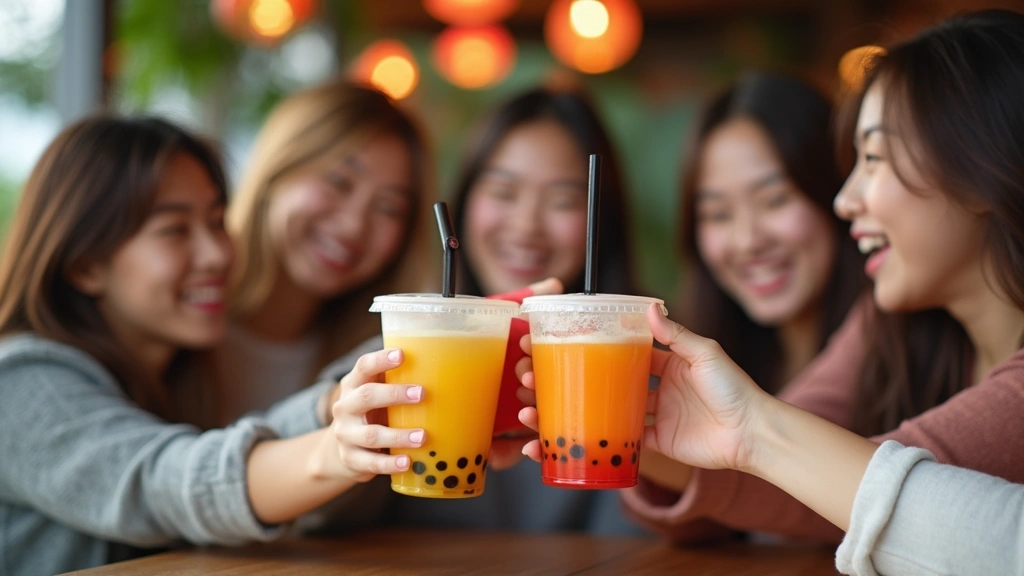
With its vibrant flavors and refreshing qualities, Taiwanese Bubble Tea with Fresh Fruits is a delightful treat that brings a taste of Taiwan to your home.
Whether you're new to bubble tea or a seasoned enthusiast, this authentic recipe offers a delicious and fun experience.
Try this recipe today and explore the endless possibilities of flavor combinations and presentations.
Share the joy of bubble tea with friends and family by creating your own unique version of this beloved beverage.

